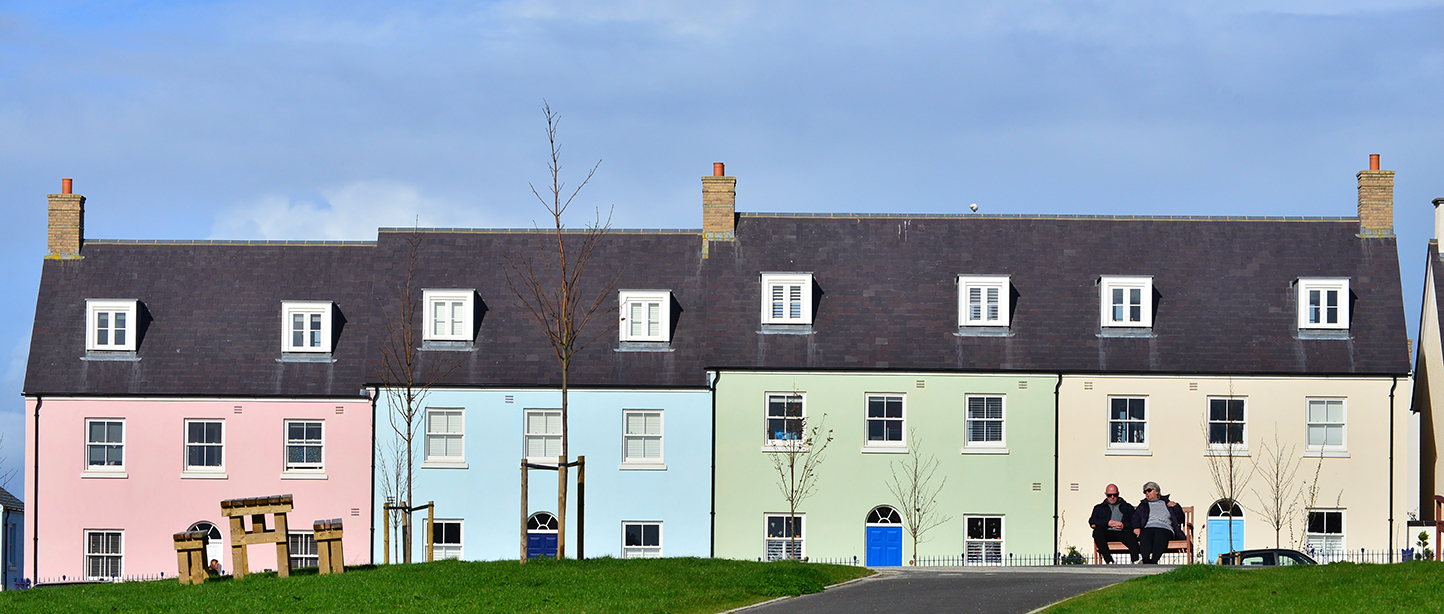Following the success of the Poundbury extension of Weymouth in Dorset on land owned by the Duchy of Cornwall comes Nansledan, a 218-hectare extension of the coastal town of Newquay on the north coast of Cornwall.
Once again, most of the land for the development comes from the Duchy of Cornwall, a private estate established in 1337 that funds the public, charitable and private activities of the Prince of Wales and his family.
And, once again, the Prince of Wales’ views about architecture, which are not popular with all architects, has influenced the development, with the Duchy’s 'Building Code' governing which materials should be used.
The Building Code sets out a sequence of choice so that, where possible, materials come first from Cornwall. When they are not available from Cornwall there is a hierarchy of preferences for sourcing spreading out to the South West of England, other parts of the UK and then other parts of Europe.
The material options specified by the scheme’s master planners, Adam Architecture, in order to meet the Duchy’s requirements for local materials compatible with a Cornish vernacular wherever possible, have included the use of natural stones such as roofing slate from Trevillett Slate near Tintagel on the North Cornwall coast, from Welsh Slate's Penrhyn Quarry in Wales and Burlington Stone in Cumbria. Granite kerbs and cobbles come from De Lank Quarry on Bodmin Moor. Some of the walling and stone for Cornish hedges is from the family-owned Callywith Quarry in Bodmin. Sawn slate for street signage and cills comes from Delabole Slate Quarry, also in North Cornwall.
Lately, as work continues on Newquay’s mixed-use urban extension, Welsh slates from Welsh Slate’s Penrhyn Quarry have continued to make their mark.
Hundreds of Penrhyn Heather Blues in two sizes (500mm x 300mm and 400mm x 250mm) are being installed on the roofs and as vertical slating on window bays and under-window panels.
The work is being carried out by a pair of specialist contractors for two of the scheme’s three housebuilder developers.
Horizon Roofing, based in Redruth, has been working with housebuilder C G Fry & Son, while Wessex Slate & Tile Roofing Services, based in the Cornish village of Indian Queens, has been working with Wain Homes.
Although the slates have been used on a mixture of styles of houses and apartments at Nansledan, the roof pitches have been designed in a traditional way to accommodate the slate.
As most Cornish vernacular buildings are simple, with simple roofs, the Pattern Book for Nansledan reinforces an approach that minimises the need for any special connections, although they do occasionally happen.
The vision for Nansledan evolved through extensive public consultation, culminating in an ‘Enquiry by Design’ exercise hosted by The Prince’s Foundation in 2004. Detailed planning permission for the first phase of development was granted in 2012 and construction started in early 2014.
Over time, Nansledan will evolve into a community of up to 3,700 homes, with its own high street, primary school, social and public spaces, green infrastructure, and commercial and light industrial units. Nansledan is already home to some 30 local businesses and has quickly become a sought-after commercial location.
Architecturally, the development captures the spirit of Newquay’s urban fabric, sometimes reinterpreting it with a contemporary view to how things have developed in terms of climate and energy use.
Adam Architecture director Hugh Petter, who is Nansledan’s masterplanner and co-ordinating architect, says: “Using Welsh Slate aides the sustainability objective as a reasonably local, long-lasting material. The slate is also characteristic of Newquay and Cornwall. As such it reflects local identity and adds to the cohesion with Newquay.”
Wessex Slate & Tile Roofing Services are two years into the current project phase, fixing the Welsh Slate with two copper clout nails to small roof areas of approximately 80m2, working with around 30 properties in a block.
The specification for them is mainly cold roof space, with rafters under felt, batten and slates fixed in random width and diminishing courses. Sized slates are also used depending on availability.
Treve Kitchen is the company’s estimator and materials co-ordinator. He says: “Welsh Slate is detailed on the build plans for the roofs because of its quality, performance, looks and sustainability credentials. It’s a high-quality product and very good to work with.
“Our clients, the Duchy of Cornwall, work to very clear principals and place a priority on natural, sustainable, local materials and labour, skills and craftsmanship.”
Inevitably, working through the pandemic has made life more difficult and Treve says: “The project has been logistically challenging due to material shortages and constrictions. Maintaining the resources required on a long-term basis while servicing our other clients has also been a challenge, but one we have certainly been very happy to have!”
Spencer Osborn, managing director of Horizon Roofing, which has completed seven phases, said the roofs were standard in the main, although solar tiles have been introduced to some plots. “Overall, the project is a challenge due to the intense labour requirement, but the Welsh slate has performed perfectly well.”
Nansledan won a 2021 RIBA South West Award when the judges said: “At a detailed level, painted timber boarding, render – rough and smooth – granite, hanging slate, brickwork and art-deco embellishments all combine to bring architectural variety.
“But the real achievement here is at the masterplan level, with a new urban settlement that shows great townscape- and landscape-led placemaking potential.”
The scheme also won the category ‘Framework + Masterplan Large’ in the National Urban Design Awards 2021 and was shortlisted for the Planning Awards 2021 in two categories – Plan Making and Housing Development Over 500 Homes.


